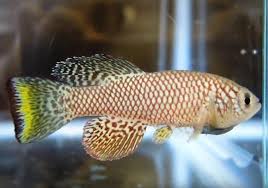
Breaking News
 What's the Best Form of Magnesium?
What's the Best Form of Magnesium?
 Google AI Lead Shane Legg Defines Levels of AGI and Superintelligence and How to Test for It...
Google AI Lead Shane Legg Defines Levels of AGI and Superintelligence and How to Test for It...
 For longer-lasting, eco-friendlier asphalt ... just add algae
For longer-lasting, eco-friendlier asphalt ... just add algae
 Leaf-scan tells farmers when fruit is ripe – without destroying it
Leaf-scan tells farmers when fruit is ripe – without destroying it
Top Tech News
 Perfect Aircrete, Kitchen Ingredients.
Perfect Aircrete, Kitchen Ingredients.
 Futuristic pixel-raising display lets you feel what's onscreen
Futuristic pixel-raising display lets you feel what's onscreen
 Cutting-Edge Facility Generates Pure Water and Hydrogen Fuel from Seawater for Mere Pennies
Cutting-Edge Facility Generates Pure Water and Hydrogen Fuel from Seawater for Mere Pennies
 This tiny dev board is packed with features for ambitious makers
This tiny dev board is packed with features for ambitious makers
 Scientists Discover Gel to Regrow Tooth Enamel
Scientists Discover Gel to Regrow Tooth Enamel
 Vitamin C and Dandelion Root Killing Cancer Cells -- as Former CDC Director Calls for COVID-19...
Vitamin C and Dandelion Root Killing Cancer Cells -- as Former CDC Director Calls for COVID-19...
 Galactic Brain: US firm plans space-based data centers, power grid to challenge China
Galactic Brain: US firm plans space-based data centers, power grid to challenge China
 A microbial cleanup for glyphosate just earned a patent. Here's why that matters
A microbial cleanup for glyphosate just earned a patent. Here's why that matters
 Japan Breaks Internet Speed Record with 5 Million Times Faster Data Transfer
Japan Breaks Internet Speed Record with 5 Million Times Faster Data Transfer
Fish that survive out of water for years could stop ageing in humans

A fish that can halt the process of ageing and survive out of water for years could help humans track down the fountain of youth, researchers have claimed.
African turquoise killifish can put themselves into a state of suspended animation as an embryo, a characteristic known as diapause.
The trend is thought to have emerged in response to seasonal changes in the environment.
Scientists at Stanford University and the Stowers Institute for Medical Research in the US are now closer to working out how they do it.
They believe it could help humans prevent ageing or even hibernate, which may be necessary on future space expeditions.
A study of their DNA shows that during diapause, genes which trigger the turnover cells dial down, while those involved in muscle maintenance become more active.
Part of this seems to be down to an increase in the production of a protein called CBX7.
The authors wrote in the journal Science: "The killifish lives in transient ponds that are only present during the rainy season and entirely desiccate during the dry season.

 Advanced Propulsion Resources Part 1 of 2
Advanced Propulsion Resources Part 1 of 2

